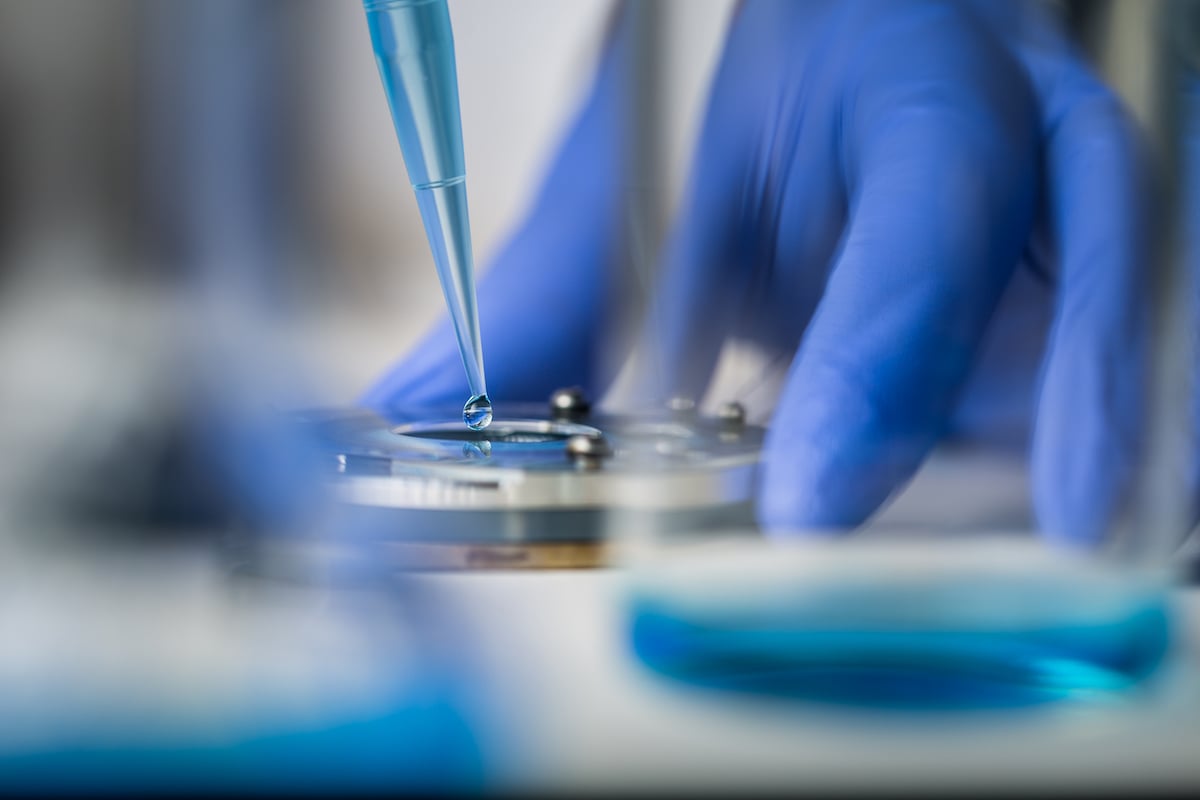
When scientists conduct experiments with liquids, they need to make sure that those liquids are pure—otherwise, they risk compromising the integrity of their findings. In fact, if metals or dissolved organic materials are present in water, critical research efforts can be completely derailed.
Consequently, scientists are always looking for solutions that enable them to know—with absolute certainty—that the water they’re using in experiments is pure and in compliance with relevant standards.
Who sets laboratory water standards?
To ensure pure water is used in experiments, a number of organizations set laboratory water quality standards, including:
- American Chemical Society (ACS)
- ASTM International
- United States Pharmacopeia and the National Formulary (USP-NF)
- Clinical and Laboratory Standards Institute
ASTM standards—which can be found here—for example, suggest specific measurements of resistivity, conductivity, pH, total organic carbon, sodium, chloride, and silica in laboratory reagent water.
What factors influence water purity?
Although several factors influence the purity of laboratory water, let’s take a look at four of the most important ones.
- pH levels
Influencing the rate of chemical and enzymatic reactions, water pH levels play a crucial role in laboratory practices. When water pH levels are too high or too low, certain experiments could be in jeopardy. In the case of experiments involving aquatic life, for example, biological processes—such as circulation, reproduction, and metabolism—can be adversely affected by improper pH levels. High-purity water is used most frequently in the laboratory in order to avoid potential artifacts that arise from water impurities. - Temperature
When temperatures fluctuate, findings can end up skewed, which is why getting accurate results starts with maintaining predictable temperatures. For example, researchers have found that higher water temperatures are associated with unexpected chemical reactions, and higher temps also prompt an increase in chemical reactions. - Dissolved oxygen (DO)
Dissolved oxygen is the level of free, non-compound oxygen found in water and other liquids. DO levels in water have traditionally been accepted as the most important indicator of water's ability to support aquatic life. In addition to being vital to aquatic life, DO is also vital to the prevention of odor in water.
High dissolved oxygen levels, for example, can lead to unwanted and increased levels of bacteria and infections, making findings unverifiable. - Turbidity
Cloudy, murky water has a high level of turbidity, which is a measure of the level of water transparency caused by suspended or dissolved particulates. Turbidity also impacts DO through its effect on rates of photosynthesis. Researchers who require pure water for experiments need to ensure their liquids are crystal clear with little to no turbidity.
Not sure how to gauge turbidity? Modern water quality measurement instruments make it simple.
What could possible contaminants mean for labs and experiments?
Different contaminants—such as gases, bacteria and their byproducts, inorganic ions, organics, and particulates—affect lab experiments differently. Here are just a few examples of what that means:
- Too much carbon dioxide can change pH levels and impact research findings.
- Bacteria and their byproducts can inhibit cell growth.
- Too much heavy metal in water can be toxic to certain kinds of cells.
- Organic compounds, such as fulvic acids or contaminants from pesticides, can support microbial growth, thereby interfering with the integrity of conclusions.
- Particulates (e.g., sand or rock) can weaken accuracy in instrumental readings.
And the list goes on. With Jenco’s suite of water quality measurement instruments, scientists can ensure that the water they’re using protects the integrity of their experiments. Our instruments automatically record and transmit data, so research teams can keep their fingers on the pulse of their water’s chemistry. Compare that to conducting an extensive experiment only to find out that the water was contaminated after it’s too late.
Partner with Jenco and help change the world.
Jenco has engineered cutting-edge water quality measurement instruments for more than 45 years. As a Jenco distributor, you’ll get access to today’s leading solutions that enable scientists to conduct research that changes the world. With less than a 0.25 percent defect rate across all of our products, you get the peace of mind that comes with knowing that what you’re selling is top of the line.
And you don’t have to go it alone, either. Our sales support tools enable you to go to market right away. We also provide marketing and sales collateral that can be customized to meet your customers’ unique challenges.
Click here to learn more about becoming a Jenco distributor today.
Comments